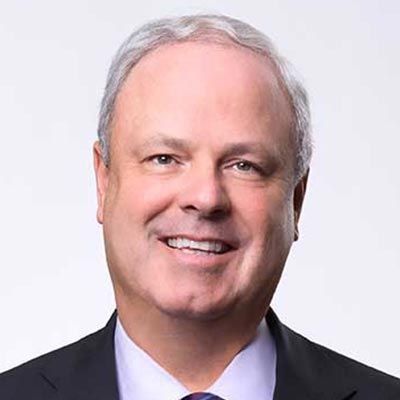Snapshot of the Oncology Workforce Shows Shortage of Specialists in Pockets of the Country
The American Society of Clinical Oncology gathered the most recent data on the supply of oncologist in comparison to the demand for them in the United States. A significant shortage of specialists was discovered.
Howard A. Burris III, MD

To be able to diagnose, treat, and care for patients with cancer, there has to be a proportionate amount of people in the workforce for oncology to provide these services. To monitor these needs as the number of cancer cases increase, the American Society of Clinical Oncology (ASCO) gathered the most recent data on the supply of oncologists in comparison to the demand for them in the United States.1
With these data, ASCO created a snapshot of what the oncology workforce looks like in the country as of August 2020.
“This is our inaugural publication of an infographic to tell readers a simple, visual, and data-oriented story about the current state of the oncologist workforce, including the current number of oncologists providing care to people with cancer, information about the demographic makeup of the workforce and where they work,” Howard A. Burris III, MD, chair of the ASCO board told Targeted Oncology, in an interview.
The infographic leads with the figure 12,940, which represents the number of oncologists, including physicians in hematology, hematology/oncology, and medical oncology as a primary specialty, who are engaged in patient care. These oncology professionals span across 1698 oncology practices in the United States (US).2
In 2014, a study from ASCO predicted that the US would reach a significant shortage in hematologists/oncologists as well as radiation oncologists by 2025. The shortage was projected to short by 2,250 oncologists. Already, based on this 2020 snapshot, the population of specialists required to support the rising cancer cases and disease management demand is coming up short.3
Burris explained that “the ‘In focus’ section of the infographic focuses on a new theme each year. This year, it focuses on cancer care in rural America. A key takeaway is that, with 1 in 6 Americans living in a rural area and 66% of rural counties having no hematologist and/or medical oncologist, access to quality cancer care is a concern.”
Furthermore, there are 32 million Americans living in a county without an oncologist. Four in 10 Americans who live in rural areas who have or had cancer say that there are no cancer specialists near where they live. Contrarily, urban counties have 20 times more oncologist per square mile than rural counties, and 10% of oncologists in the United States work in only 3 urban counties.
Other general information on the specifics of the workforce in oncology were also included down the side of the infographic, including the age of the workforce. A fifth (19.7%) of oncologists are nearing retirement age of 64 years or older and 15.6% of oncologists are early in their career at age 40 or below. There are 601 fellows who graduated from an oncology program this year.
“The oncologist workforce grows slightly and incrementally each year,” Burris said. “Because the number of fellows training in oncology specialty programs is relatively stable from year to year, there is not an opportunity for significant expansion. Keeping track of the number of providers, as well as their geographic distribution around the country, will ensure that any surprising changes will be observed and responded to in real time.”
The diversity of the workforce is also included in the snapshot of 2020. Only 4.7%, 3%, and 0.1% of oncologists are Hispanic or Latino, Black or African American, or American Indian or Alaska Native, respectfully. Female oncologists make up 34.4% of the workforce.
“There are many national, state-wide, and local trends that affect the delivery of quality cancer care, both from the side of supply and demand. The number of people diagnosed with cancer continues to grow each year—as does the number of cancer survivors—and therefore it is increasingly important to monitor the workforce available to treat the expanding patient population,” Burris concluded.
References:
1. New resource provides snapshot of oncology workforce in the United States. News release. ASCO. August 27, 2020. Accessed September 3, 2020. https://bit.ly/31UE80j
2. 2020 snapshot: state of the oncology workforce in America. ASCO. August 24, 2020. Accessed September 3, 2020. doi:10.1200/OP.20.00577
3. Yang W, Williams JH, Hogan PF, et al. Projected Supply of and Demand for Oncologists and Radiation Oncologists Through 2025: An Aging, Better-Insured Population Will Result in Shortage. J Oncol Pract. 2014;10(1):39-45. doi:10.1200/JOP.2013.001319
Westin Discusses Logistical and Tolerability Challenges in Metastatic Cervical Cancer
April 21st 2025During a live event, Shannon N. Westin, MD, MPH, and participants discussed their experience treating patients with progressive cervical cancer and the toxicity profile of tisotumab vedotin.
Read More









